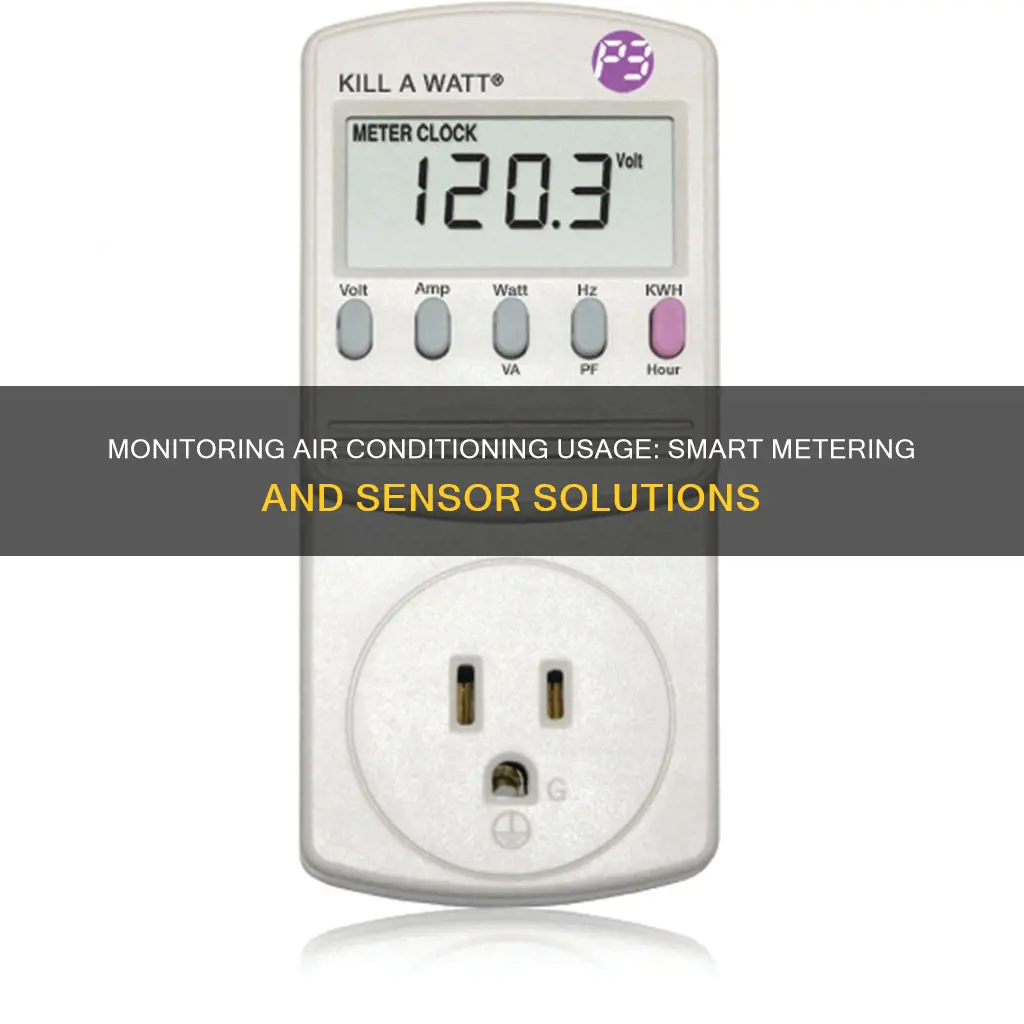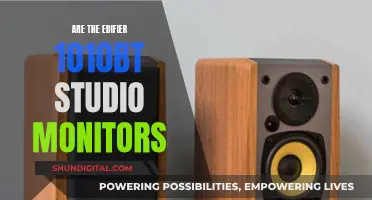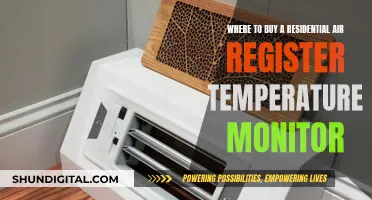
Monitoring air conditioning usage can help you save money, increase energy efficiency, and reduce your carbon footprint. There are several ways to do this, including smart thermostats, smart plugs, and smart outlets. These devices can provide real-time data and notifications about energy usage and allow you to control your air conditioning remotely. You can also track energy usage through a home monitoring system, which connects to the circuits in your home and provides detailed information about power consumption. Additionally, you can use smart temperature sensors, which are a cheaper option to monitor the runtime of your air conditioning units.
| Characteristics | Values |
|---|---|
| Purpose | To monitor air conditioning usage in order to reduce energy costs and improve efficiency |
| Methods | Smart thermostats, energy monitors, smart plugs, smart switches, smart AC controllers, temperature sensors, smart outlets, smart meters, energy-monitoring apps, smart thermostats |
| Data Collection | Real-time data, instant alerts, performance reporting, analytics |
| Benefits | Improved system performance, immediate alerts, maintenance and preventive care, energy savings, compliance and regulation |
| Considerations | Cost, compatibility, ease of use, accuracy, security |

Smart thermostats
Remote Control and Monitoring
Energy Usage Insights and Savings
Many smart thermostats offer energy usage insights and reports. They can track and display your air conditioning's energy consumption, allowing you to see how much energy you're using and identify areas where you can save. Some thermostats, like the Ecobee Smart Thermostat, can even suggest ways to reduce your energy usage and lower your bills.
Smart Features and Automation
Compatibility and Integration
When choosing a smart thermostat, it's important to consider compatibility with your existing HVAC system and smart home ecosystem. Most smart thermostats work with popular voice assistants like Amazon Alexa, Google Assistant, and Apple HomeKit. However, not all thermostats support all types of HVAC systems, so be sure to check the compatibility before purchasing.
Installation and Setup
- Ecobee Smart Thermostat Premium: Compatible with Alexa, Siri, Google Home, and Samsung SmartThings. Includes remote sensors, voice control, and air quality monitoring.
- Google Nest Learning Thermostat: Easy to set up and control using AI. Compatible with Alexa, Google Home, and Samsung SmartThings.
- Amazon Smart Thermostat: Affordable option with basic features and compatibility with Alexa and Ring.
- Honeywell Home T9 Smart Thermostat: Easy to install and use, with support for Alexa, Google Assistant, and IFTTT. Includes a remote room sensor.
CenturyLink and Cox: Monitoring Your Internet Data Usage?
You may want to see also

Energy-monitoring apps
Green Outlet
This app was designed to allow users to determine which home appliances consume the most energy. It requires some personal data, then calculates an average monthly rate. It also includes an alert to let users know if they are exceeding the recommended carbon usage based on government regulations.
Energy Cost Calculator
This app is free on iTunes and simple to use. It calculates the energy cost of an electronic item based on several equations. Users input an estimated energy use per hour and hours used per day. The result shows what they are paying and their energy usage per day, week, month, and year, as well as carbon emissions per year.
Smappee
Smappee provides a clip-on sensor that attaches to your fuse box. From there, users can view and monitor their energy usage via the free app. All information is provided in real-time and will display energy costs for the previous 30 days. An added benefit is that it can pinpoint all the appliances in a user's home.
Power Cost Monitor – Energy Cloud
This app helps homeowners wirelessly monitor their energy consumption. Users need to install sensors to gather information, but all products are simple to use and don’t require professional assistance. Energy usage information is available online or via a mobile app.
Emporia Energy
Emporia offers smart plugs that monitor energy usage. They can be controlled from an app so that if users are away from home, adjustments are only a few clicks away.
DTE Insight App
This app is paired with the DTE Energy Bridge, which serves as a hub for your smart home. By connecting compatible smart home devices like light bulbs, plugs, sensors, and thermostats, you can view your energy use in real-time and make on-the-spot decisions through the app.
Nest Mobile
This app only works with the Nest Learning Thermostat. It allows users to adjust the temperature of their home from several devices. It also shows the energy history, displaying how long the heating and cooling system ran to help users decide where to make adjustments.
In addition to these apps, there are also smart air conditioners and smart switches that can help monitor and control air conditioning usage.
Monitoring Xbox Usage: Remote Control for Parents
You may want to see also

Smart plugs
To set up a smart plug with your air conditioner, simply plug the smart plug into a wall outlet, then connect the air conditioner's power cord into the smart plug. Once the connection is made, connect the smart plug to your Wi-Fi network. You can then control the air conditioner remotely and set schedules and timers through a companion app on your smartphone or other devices.
It is important to ensure that your air conditioner is compatible with the smart plug before purchase. Check the specifications of the smart plug to make sure it fits your specific air conditioner, and verify that the voltage and wattage ratings on the plug match those on the air conditioner. Additionally, some air conditioners may require a specialised adapter to connect to a smart plug, so be sure to consult the manufacturer's instructions or contact customer service if you are unsure.
While smart plugs offer a convenient way to control your air conditioner remotely, there are a few drawbacks to consider. Smart plugs do not directly communicate with your air conditioner like a thermostat or smart AC controller. They function as a hard switch to turn the power on or off, which may cause issues with modern air conditioners that have a sophisticated electrical system. Additionally, smart plugs do not offer true smart controls such as geofencing, scheduling with AC modes, or AC filter status.
Despite these limitations, smart plugs can still be a useful tool for monitoring and controlling your air conditioner, especially if you are working with an older model. They are generally affordable and easy to install, making them a popular choice for those looking to add smart capabilities to their home appliances.
Water Usage Monitoring: A Standard Practice in Hotels?
You may want to see also

Smart AC controllers
There are several features to consider when choosing a smart AC controller. Firstly, some controllers, like those made by Sensibo and Cielo, are remote control-friendly and can detect the infrared signal sent by the remote to the air conditioner. This makes it easier to automate your home. Secondly, smart AC controllers include a built-in thermostat and humidistat to provide real-time information on temperature and humidity levels in the room. Thirdly, smart home integration is an important feature for those who want to control their entire home from one system. Many smart AC controllers are compatible with popular smart home systems such as Amazon Alexa, Google Assistant, and Apple Siri.
- Sensibo Sky: Lightweight and highly popular, Sensibo Sky has an open API and integrates with Samsung SmartThings and Amazon Alexa. It also connects with Google Assistant and offers customisation options such as geofencing and scheduling.
- Cielo Breez Plus/Eco: The Plus model acts like a thermostat and has physical buttons and a digital display, while the Eco model is half the price and controlled exclusively through an app. Both models offer long-term tracking options to monitor AC usage trends and ensure proper functioning.
- Ambi Climate 2: This controller uses machine learning and user feedback to create a personalised experience, taking into account factors such as humidity, weather data, and time of day. However, it has been reported to have inconsistent performance and does not include a motion sensor.
- AirPatrol WiFi: Based in Europe, this controller is easy to set up and use, and offers quick support and regular app updates.
- Tado Smart AC Controller: This controller includes a motion detector to identify when a room is in use, but it has received poor reviews, especially regarding its software, and is only compatible with certain types of remotes.
Verizon's Data Usage Monitoring: What You Need to Know
You may want to see also

Smart meters
If you're unsure whether you have a smart meter, you can go outside and check your meter. Look for a digital readout or a label indicating that it is a smart meter.
In addition to smart meters, there are other ways to monitor your air conditioning usage. You can purchase smart air conditioners that allow you to see when they are on remotely and provide usage history. Smart switches and smart temperature monitors are also options to consider.
If you want to monitor energy usage at the circuit level, there are energy monitors available that can provide detailed information about power usage for individual circuits in your breaker box. These can be useful if you want to track the run times and energy consumption of specific devices, such as your HVAC system or exterior lighting circuits.
By utilising smart meters and other monitoring solutions, you can gain a better understanding of your air conditioning usage and make informed decisions to optimise your energy efficiency and reduce costs.
Internet Monitoring: How Often Are We Tracked Online?
You may want to see also







